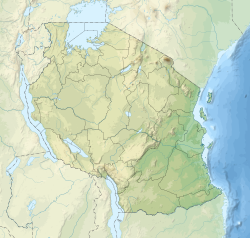This article includes a list of general references, but it lacks sufficient corresponding inline citations .(February 2014) |
| Hombolo Dam | |
|---|---|
| Country | Tanzania |
| Location | Hombolo |
| Coordinates | 05°57′00″S35°58′10″E / 5.95000°S 35.96944°E |
| Status | Active |
| Opening date | 1957 |
| Reservoir | |
| Surface area | 15.4 km2 (5.9 sq mi) |
| Normal elevation | 100 m (330 ft) [1] |
| Website www | |
Hombolo Dam is a dam in Tanzania. It is at Hombolo-Bwawani village, in Dodoma-rural District. The dam was constructed by the colonial government in 1957 for irrigation, domestic water supply, and water for livestock.


